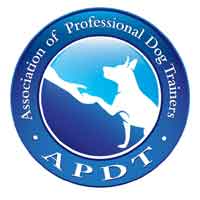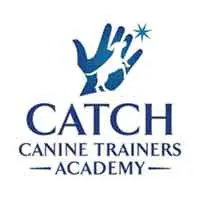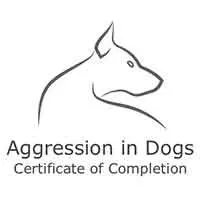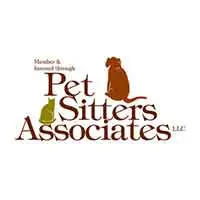It is extremely helpful to learn all you can about dogs’ body language and even dive deeper into breed specific body language. Some stress signals can be lip licking, stiffening, wide eyes with white corners, and yawning. When a dog feels threatened by something, the first and safest option (they think) is for them to bark, lunge, growl, bite, cower or run away.  If the response is “flight†and the dog is restricted by a leash or enclosure, the fear reaction may manifest itself as appeasement behavior, cowering or any of the aggressive behavior described above.  In the dog’s mind, they are trying to get rid of that which scares them.
THE ROOT OF MOST AGGRESSIVE DOG BEHAVIOR IS FEAR
Possible underlying dynamics could be:
- Inadequate positive socialization: especially during the Critical Socialization Period of one to three months, then ongoing; This includes many different types, ages, sex of people, dogs, cats, noises such as big trucks, car horns, vacuum cleaner, mixer etc., textures to walk and potty on and in the rain; all different places and activities ad infinitum.
- A genetic predisposition
- Traumatic experience(s)
- Lack of nurturing or basic needs
- Over protected and lack of confidence building experiences
 Dog Training Strategies for fearful dogs
As the pet parent/foster/handler for a dog or puppy showing signs of fear, it is important that we be their advocate and ideally keep them within their “thresholdâ€, or comfort level, whenever possible. This will create a mindset for the dog to learn new associations with people, dogs, places, sounds, and other things that scare them while using behavior modification techniques such as Counter Conditioning and Desensitization.  Food is a “Primal†motivator and creates positive chemical responses in the brain as well as physical ones, such as salivating, and is easily accessible.  Using high value treats, very tasty and smelly foods dogs do not usually get like Bacon, Chicken or Beef, are great motivators for changing emotions and using tiny, easily consumed pieces, helps them enjoy it without spending time being distracted away from the training. Some dogs may prefer their favorite toy over food if they perceive them as sheer enjoymentïŠÂ  But at other times, if a dog is highly stressed their “flight†or “fight†response kicks in and they often will not be interested in food or toys.
Counter Conditioning
Counter Conditioning is the process of changing an association with something, in this case from one of fear to a more relaxed or even happy emotion. You want your pup to look for praise and or treats falling from Heaven every time they see a dog, bike, skateboard, bearded man, or a dog trainer with a big hatïŠ
This happens because every time your pup first sees a stimulus such as a dog, you will start feeding treats and speaking affirmatively about the other dog. If you are walking toward the other dog please first flood  (giving lots of treats in sequence) your dog when she first sees the other dog, ideally at a distance, and if you notice your dog showing some concern, make a U-turn away from the stimulus and continue feeding treats and keeping her moving for a bit in order to bring her down a notch.  After you have, you may want to ask her to “watch†you and do a series of sits when you stop, which will help redirect her focus back on you.  Proceed to turn back while treating and gently encouraging her while slowly closing the gap, or just stopping and allowing her to watch at a comfortable distance for a bit.  If at any time your pup gets overly stressed, it is time to not only counter condition, move away from the stressor, but maybe even call it a day and leave the area. Knowing your dog’s body signals and respecting them will build trust with her and being aware of our own energy and focusing on calm leadership will transfer down the leash as well.Â
If on the other hand you are sensing she is OK with what is happening, then please continue to engage her in some sits and U-turns, while approaching the other dog in slow, friendly manner. Depending on your pup and what you are reading about the other dog and owner (if engaged or not), you may decide to stop where you are, continue with the other person’s support after explaining you are training and ideally want both dogs to sit/stay for a moment, then proceed in a controlled manner as we approach each other and let them great. Taking your time with this whole process and evaluating the other dog is vital here.
This is a simplified explanation and I will demonstrate more when we work one on one.
Warning please: If you see an unleashed dog that you are unfamiliar with, please keep your distance and just allow your pup to observe a moment while you are treating and then leave, making sure the other dog is not following you. Please do not approach because there is no guarantee about the other dog (like at Dog Parks) plus yours will feel disadvantaged because she is leashed and the other one is not. If by chance the other dog does run toward you, stay calm. Position yourself with your pup behind you and in between the oncoming dog. If you can get the owners attention great, but either way be ready to be your pup’s advocate by getting big with your arms and showing strong leadership to both dogs. I have used a variety of safe deterrents in the few occasions this has happened. One time I was running a dog on my bike and another dog came running out the yard. I quickly dismounted and used my bike to block and chase the dog away
Be careful not to break up a dog fight if one occurs.  Prevention is ALWAYS the safest action.
Desensitization
Desensitizing a dog to something she is scared of, such as other dogs, is the slow process of exposing her repeatedly to the stressor, while she is within her threshold or comfort zone.
Generalizing a behavior is training a dog in different locations, time of day, weather and so forth. Counter Conditioning and Desensitization need to be used together for the best results. Patience and consistency in repeating this process while modeling loving leadership, which is your pup looking to you for direction, protection and boundary setting, can produce miraculous results. I have experienced it many, many times with dogs that were previously thought unable to change! It is truly heart-warming to see them playing freely with dogs they were previously scared of.





